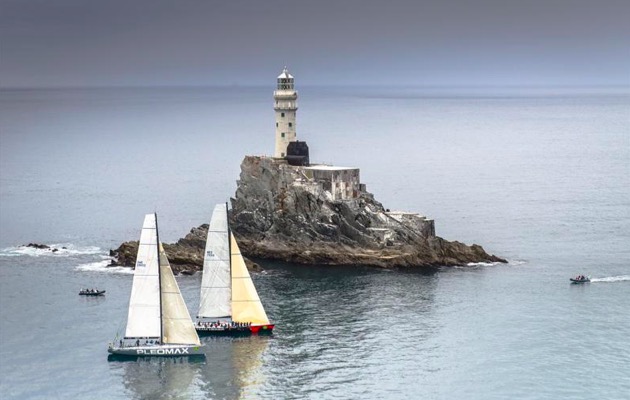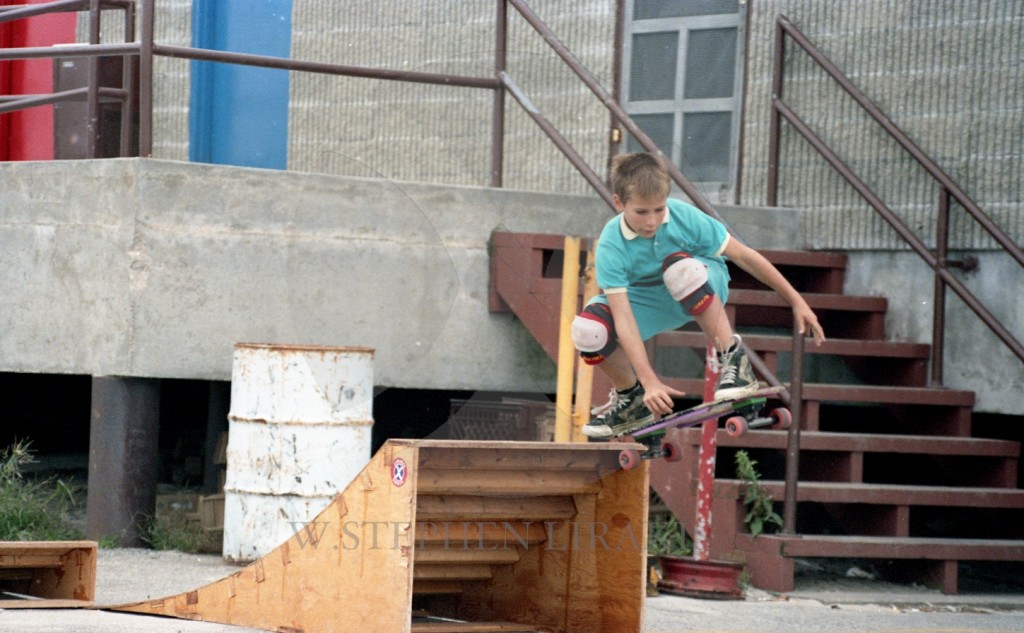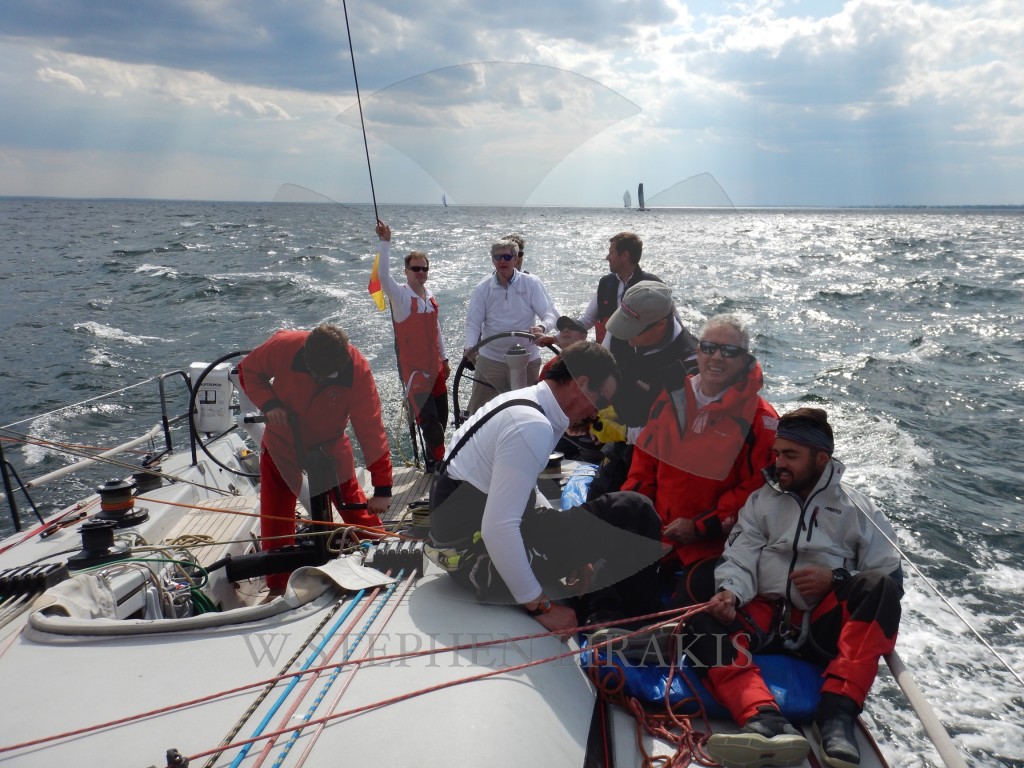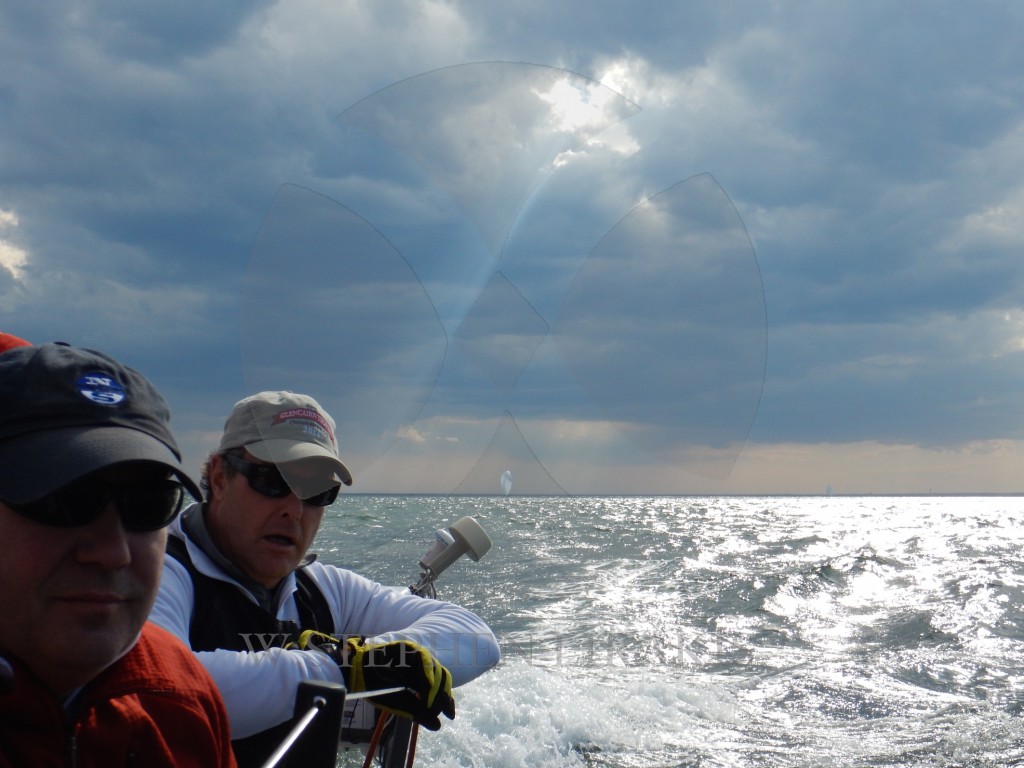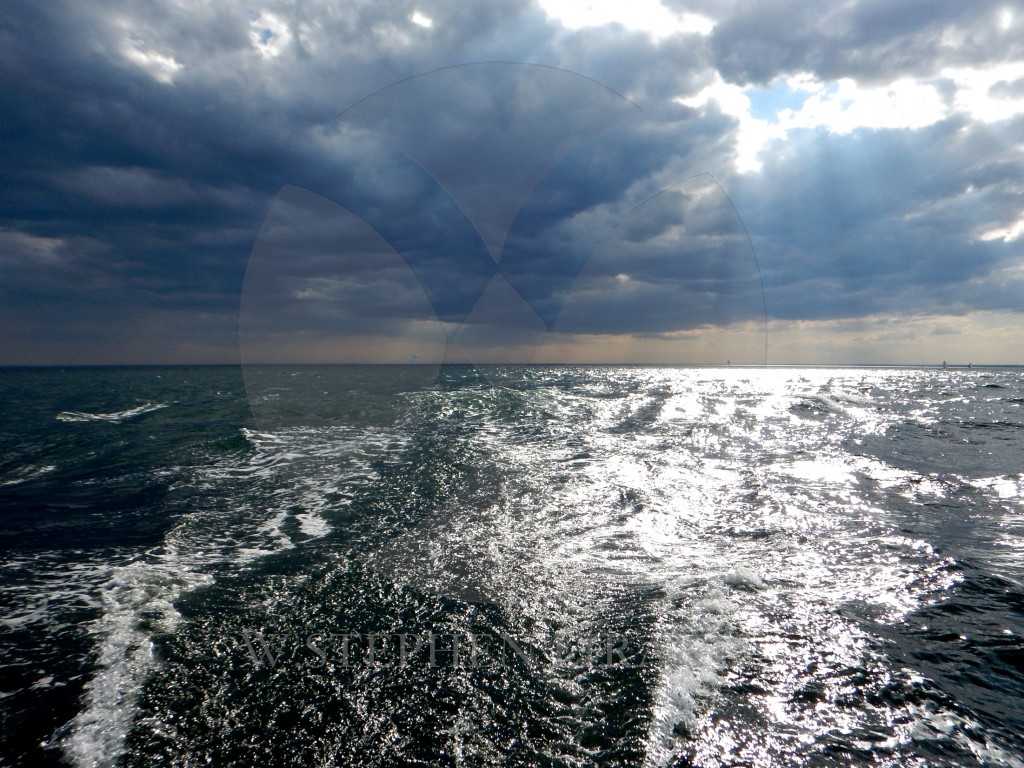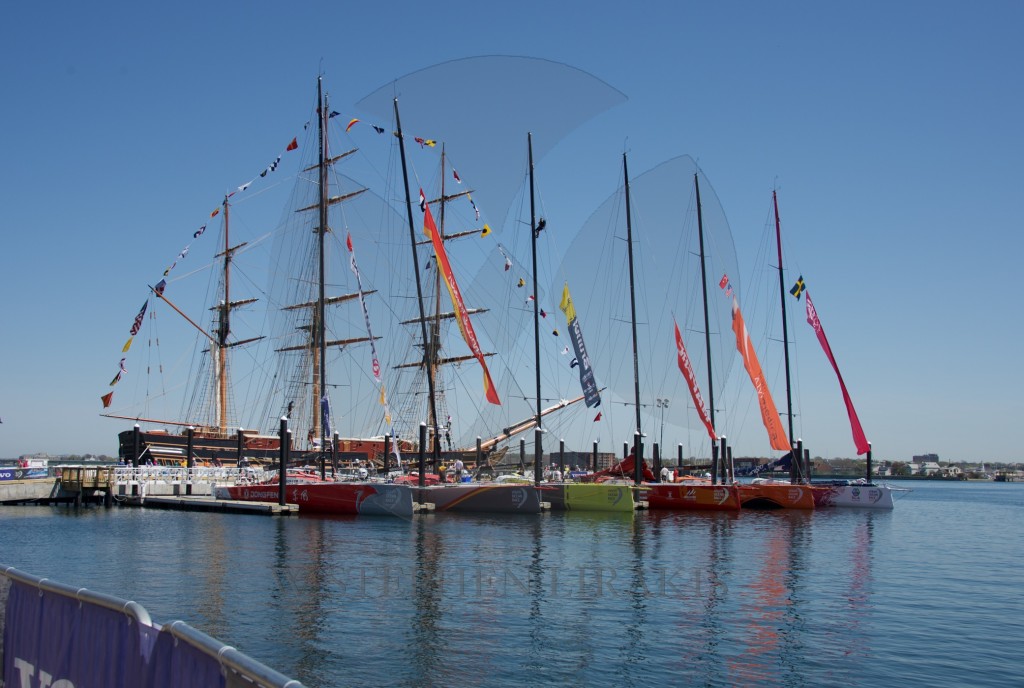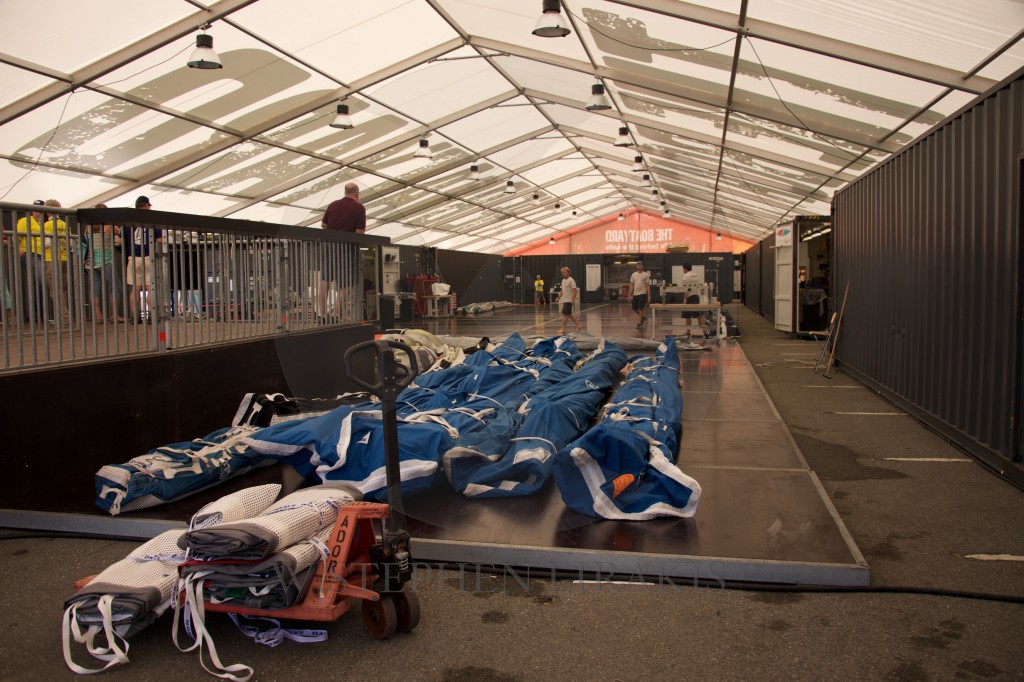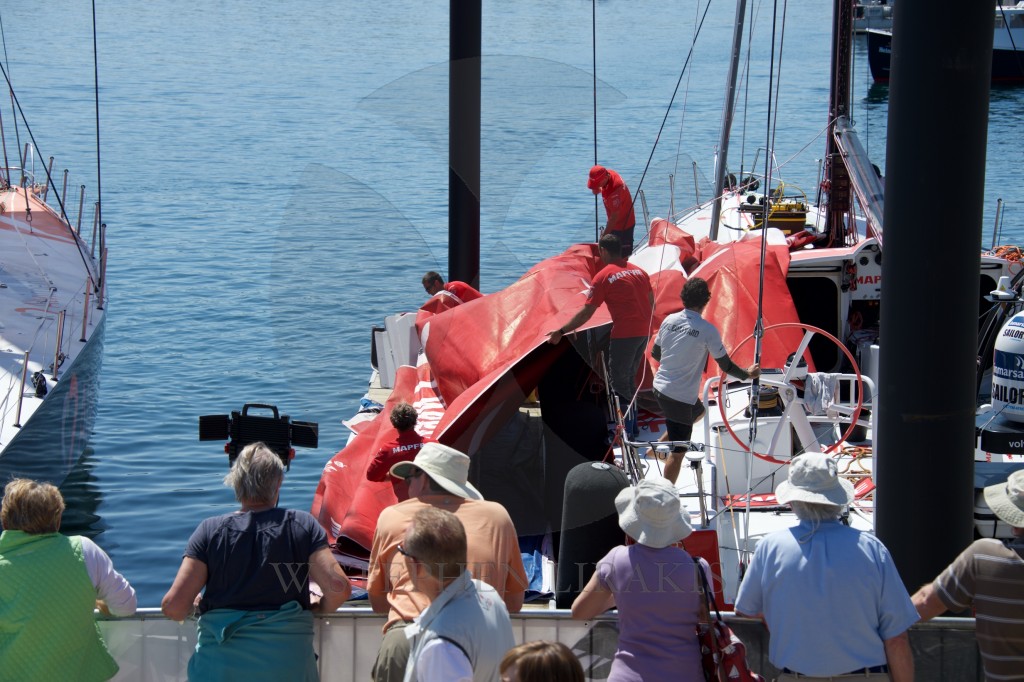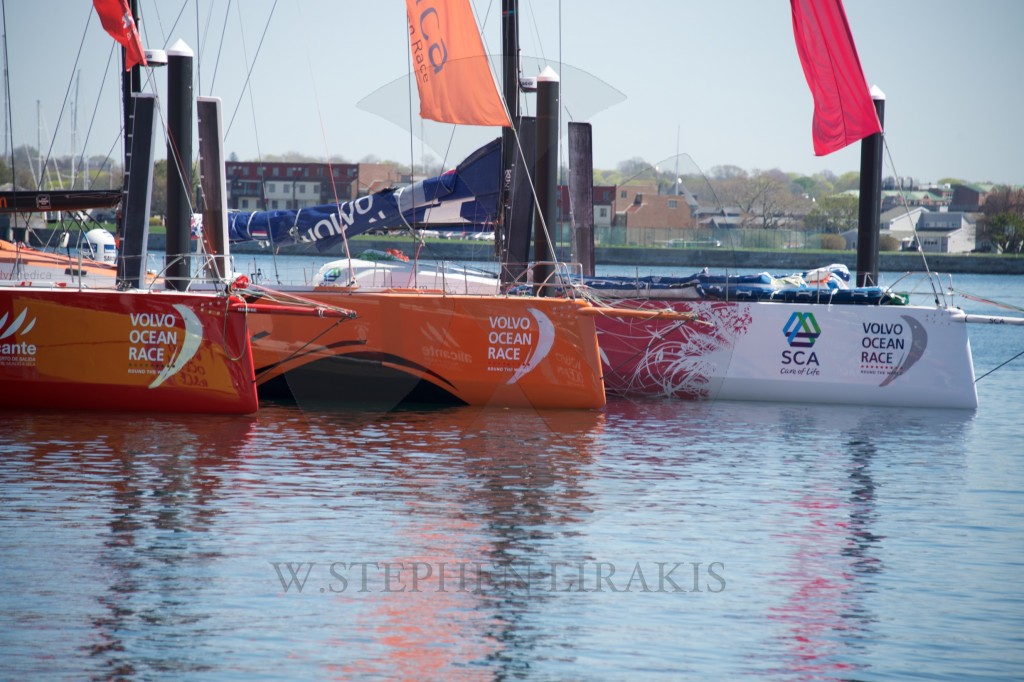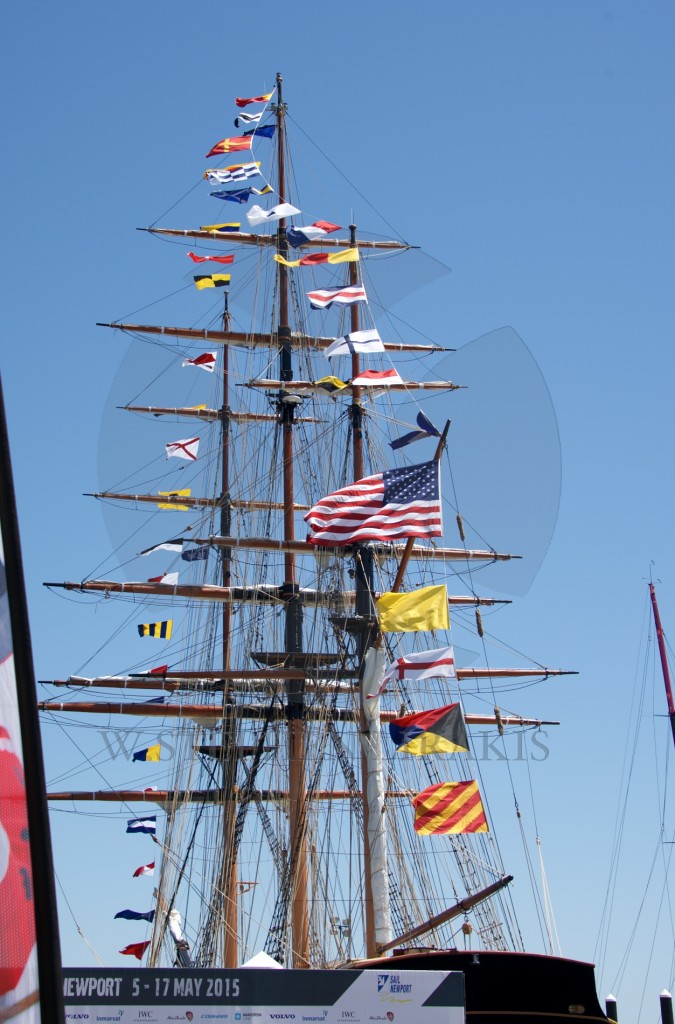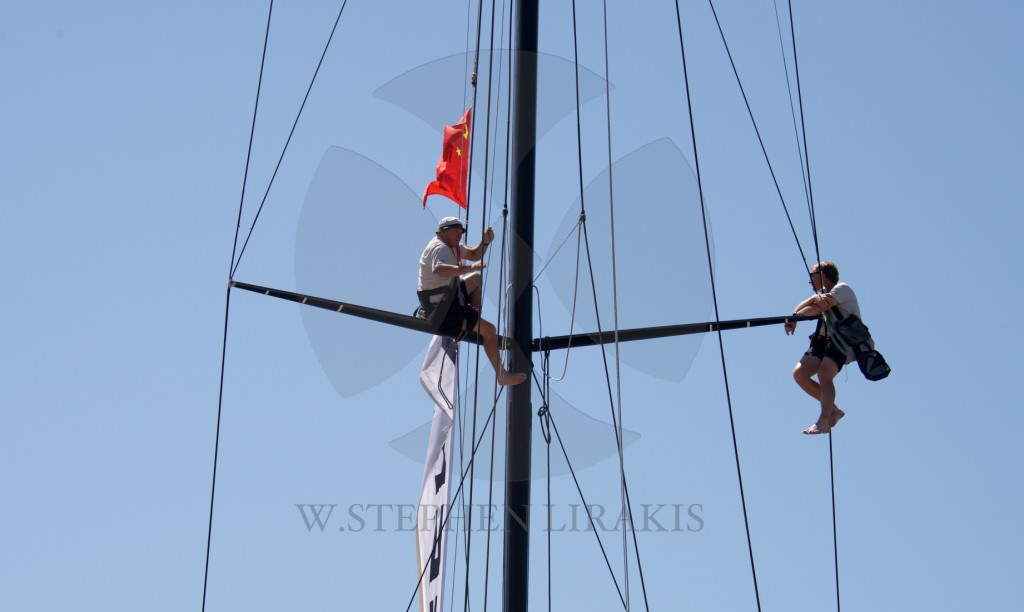I crossed the Atlantic in 11 1/2 days this summer. For someone of my generation this was special. I never expect to repeat this experience. But I am still on a slow boat in today’s world.
The America’s Cup will never go back to non foiling boats. I still predict that the next Olympics will have at least one foiling class, if not two. No one is looking back, unless it is to true classic yachts. That is for different reasons of beauty and elegance.
Category: sailing
BETTER BE GOOD AT KEDGING, LIGHT AIR FASTNET
ELAINE BUNTING
The challenge on this year’s Rolex Fastnet Race will be coaxing yachts around the course in ultra light winds
Skippers preparing ready for the Rolex Fastnet Race 2015 on Sunday were warned that it could be a slow race with very light winds ahead. “If you really want to win this race you are going to have to be good at kedging!” joked Eddie Warden Owen, CEO of organisers the Royal Ocean Racing Club.
A record number of 370 yachts will set off from Cowes on Sunday on the 604-mile classic to the Fastnet Rock lighthouse and back to Plymouth. During its 90-year history the race has seen some intense and stormy weather, but this year it promises to be quite the opposite, with some of the lightest forecasts ever seen.
Ian Walker, skipper of the victorious Volvo Ocean Race team Abu Dhabi Ocean Racing, also joked about the weather ahead. “There is another isobar approximately in Iceland,” he said.
But the fleet this year includes some of the world’s fastest monohulls and multihulls, which are capable of making enough speed to set off a virtuous circle of apparent wind. These include the 100ft supermaxi Comanche, the big MOD70 trimarans and the 40m trimaran Spindrift 2.
Kenny Read, skipper of Comanche, says: “I don’t think any of us do very well in absolutely no wind, but we all have to play the same game. Whatever the breeze is we just have to adapt. Certainly dragging around a boat with a seven metre-plus beam in very light air is no fun.”
But he did admit that, in flat water, Comanche does only need five knots of true wind to get going.
Learn more about the headlands and tidal gates that are make and break on the Fastnet Race.
While the forecasts are making predicting finish times a bit of a nightmare, this is another indication of the potency of these big machines. Spindrift’s likely elapsed times in these conditions, as predicted on routeing software, is somewhere between 1 day 18 hours and 3 days 15 hours.
This race will also be a tough one for the new IMOCA 60s, especially those with the new L-shaped foils. These are great when power reaching, which is what they have been designed for as the optimal configuration for racing round the world, but they are draggy and reported to make more leeway in light conditions.
Morgan Lagravière, the skipper of Safran, who is new to the class but comes from a very strong Olympic 49er and Figaro background, admitted as much at this morning’s media briefing. “I’m not sure this year’s Fastnet will be for us. We will try to do our best. It will be very interesting learning how to use this new boat with the foils and to race with other IMOCA boats, especially Banque Populaire,” he said.
A large contingent this year is the two-handed crews. This is a growing area of offshore sailing, one that fits into a kind of sailing Enduro category. Some 59 boats in the IRC fleet are also sailing doublehanded. The lowest rated is Lucinda Allaway’s and Tom Barker’s Contessa 32 Hurrying Angel.
Like many of the smaller and lower yachts the Rolex Fastnet Race is most likely to favour them, as the breeze will pick up later in the week. Could this be a small boat year?
It is a year also when retirements could be lower than usual – the average is around ten per cent of the fleet. That would be good news for the event as a whole, and the Commodore of the RORC, Michael Boyd, concluded the briefing today by saying: “We are delighted that this is a record year and by the quality of the competition. There are a lot of fantastic sailors, who have put their effort, energy and money to be with us for this special race.
“We wish you all a very successful race and a safe passage.”
Read more at http://www.yachtingworld.com/blogs/elaine-bunting/youll-have-to-be-good-at-kedging-light-winds-endurance-ahead-for-rolex-fastnet-race-2015-66820#vrRt82RB41D4B5bt.99
THER ARE NO NEW IDEAS
I read with interest the windskate story on Scuttlebutt
I have attached photos of my son doing the same thing in 1989. We used different size rigs depending on the wind strength. There are not many new ideas.
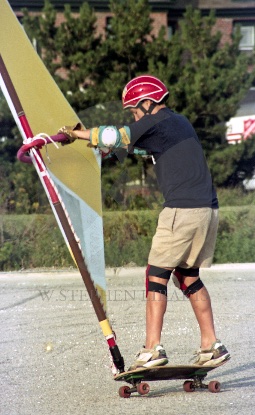
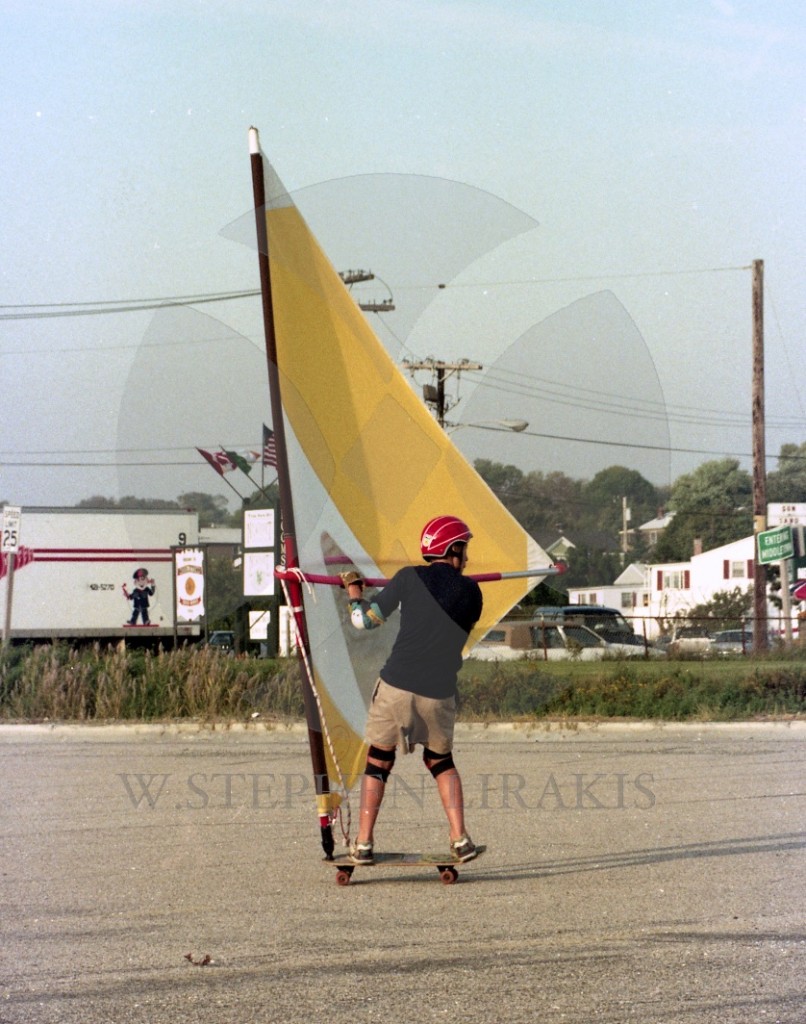
BLOCK ISLAND RACE 2015
The Block Island Race is done and dusted. “Comanche” completed the course in 11 hours. “Comanche” was back in Newport before I made it back. For “Snow Lion” it was under 22 hours. The forecast was almost right, the timing of the transitions was not quite as predicted but the general forecast was right.
I have never exited Long Island Sound by 10 pm before; and back in the Sound by 5 am. Nature provided a most lovely starry evening with a stark orange crescent of a moon over New York City.
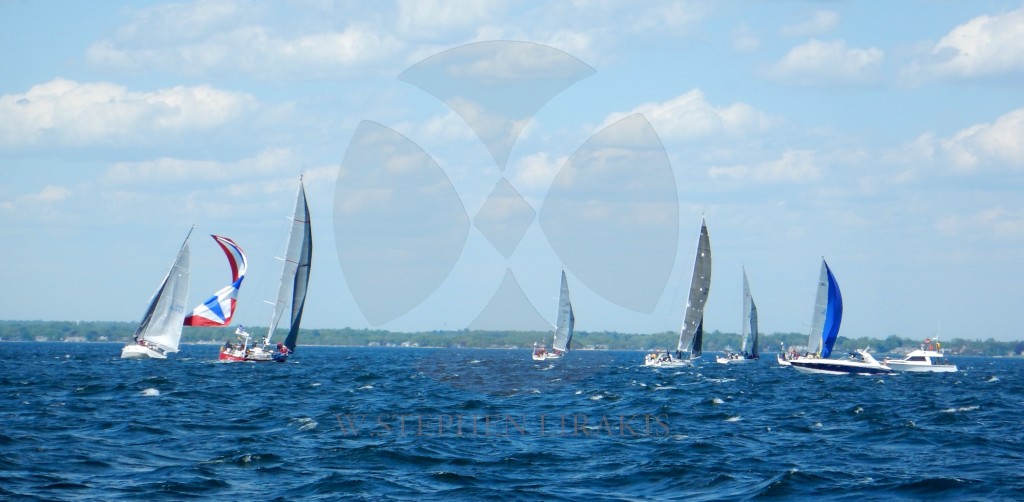
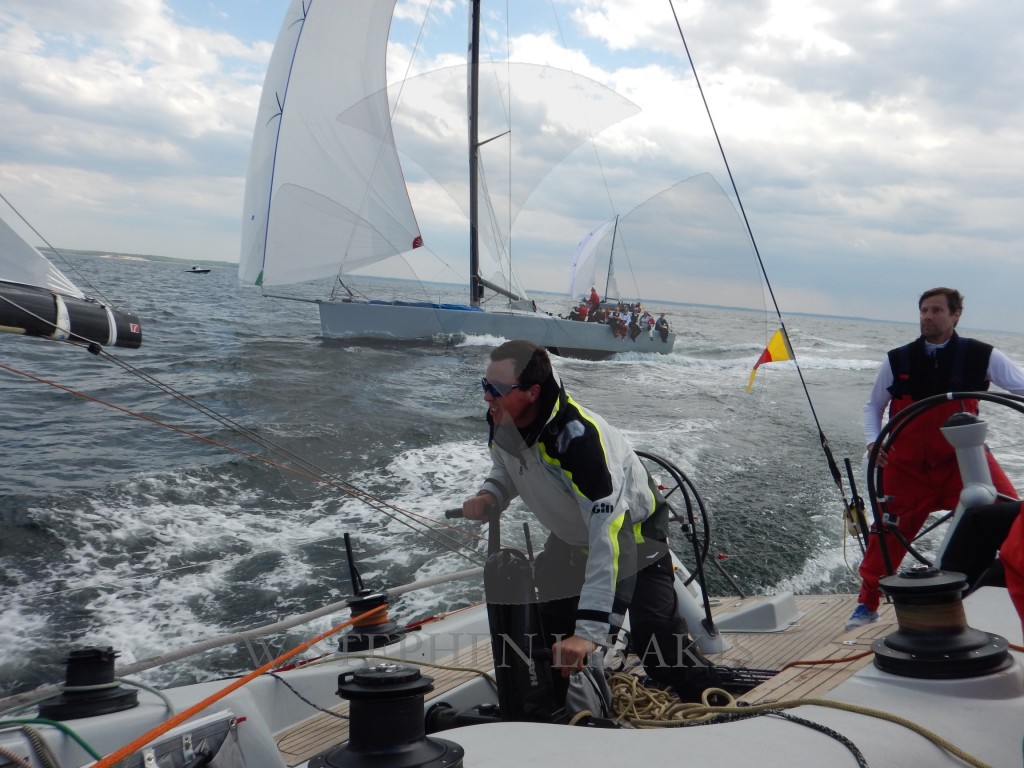
FIRST SAIL
Friday was the first sail of the season. New rigging tuned, it will stretch and need re-tuning; everything focused at the transatlantic race starting July 1.
ALL THE BOATS ARE IN
STILL CAN’T BEAT THE FRENCH AT FUN
OUTRAGE AT EVERY QUARTER ABOUT THE AMERICA’S CUP
Even Bob Fisher, who as a journalist has always loved being an iconoclast is disturbed by the events leading up to the next America’s Cup to be held in Bermuda in 2017. Below are the words he penned for scuttlebutt:
2015-04-11_8-19-46
Bob Fisher: Disgracing the America’s Cup
Published on April 11, 2015 |
by Editor
Bob Fisher knows the America’s Cup, perhaps better than anyone. His books and articles have covered the event since 1851, and he considers the event unmatched in its history and intrigue. But what Bob sees now occurring for the 2017 edition gives him grave concern. Here are his words to the current trustee, Golden Gate Yacht Club…
I cannot escape notice of what you are doing to the America’s Cup – it has been nothing short of a disgrace to the premier event in the sport of Sailing. You have abused it, misused it and reduced it to no more than an average regatta, losing on the way its prestige and at the same time driven away the most serious competitors.
In the last America’s Cup event, held on the waters of the Golden Gate Yacht Club, for whom you act in a management role, the two challengers that came up to the mark were those from the Royal New Zealand Yacht Squadron and the Circolo della Vela Sicilia – Emirates Team New Zealand (ETNZ) and Luna Rossa. In the course of the past week you have made it virtually impossible for ETNZ to raise the necessary funds to continue by removing any chance of a major regatta in Auckland, and, by a huge change in the size of boat, caused the Italian team to withdraw. Is this what you really want?
Gone is all semblance of stability and adherence to rules unanimously agreed at the outset and in their place an undercurrent of commercial misunderstanding and constantly changing rules without the unanimity of the challengers as initially agreed. Both of these are a disgrace to the Cup and to yourselves.
It was brought to my notice by you, in Auckland, that it was important for a part of the Challenger Final Selection Series to be held in the City of Sails in order to generate publicity for the America’s Cup in Asia and the reason for that was a Japanese team would shortly emerge, and that this would encourage television networks to purchase the rights.
Subsequently, the America’s Cup Event Authority (ACEA) has made it clear that ALL Challenger Selection races will be held in Bermuda, effectively slapping ETNZ in the face and reducing the Kiwis’ chances of Government sponsorship (which hung on a major AC regatta in Auckland), possibly even eliminating this team from AC35
It is unnecessary for the America’s Cup to have a television audience. For many years there was no television coverage, and later only inserts into News programmes. Televising the event began in 1983 and was carried to a new height by ESPN in 1987 in Fremantle. Even then it didn’t need catamarans on hydrofoils sailing at 40 knots to be attractive – just 12-Metre yachts in boisterous conditions with some live sound from the boats.
Now, thanks to the wizardry of Stan Honey and his colleagues, full details of the speed and direction of each of the competitors is overlaid on the live pictures of the racing. The technology of other sports has improved television for even the non-sailor, but this does not drive the America’s Cup. Money does. And there will certainly not be enough from television rights to pay for the somewhat unnecessary regattas that take place using the name of the event that has, over 164 years, taken place only 34 times.
The America’s Cup is a one-off event. It does not need promoting with pseudo regattas in the intervening years, which use its name. The Challenger Selection Trials, together with the long lost Defender Selection Trials, are adequate and the responsibility for their expense is down to the individual teams. Now there is a state of affairs in which the Defender trials have been eliminated. In the Protocol, Item 17 clearly states:
“Defender means GGYC and the sailing team that represents GGYC in AC35;”
You have excluded any chance of another US Yacht Club from competing for the Cup, maybe even giving GGYC the type of competition it needs to retain the Cup. Not even the New York Yacht Club (NYYC) felt sufficiently confident to resort to that.
Neither did the NYYC resort to changing the boats at a late date – the move from the AC-62 to the AC-48 has been very last minute and particularly hard on the teams that had set up their design groups well in advance to produce the smaller AC-62, as announced soon after the last AC match. It is hardly surprising that you have put Patrizio Bertelli’s feelings in disarray to the extent he has withdrawn Luna Rossa from AC35. His team had been working since early January 2014 at its headquarters in Cagliari with a Design Office of 40, all working on the design of a 62-footer. I suppose your comment will be: “Silly him,” but you have lost one of the biggest commercial sponsors of the Cup – just look where the Prada advertisements for Luna Rossa appear.
To throw fat on the fire, you are offering to give design and financial support to the French team, which has made little progress, and what is worse attempting to justify this with the terms of the Deed of Gift, where it indicates that the event is to be: “a friendly competition between foreign nations.” But you may well counter this with the quote from the judge of the New York Court of Appeals in the case between the Mercury Bay Boating Club and San Diego Yacht Club, who queried: “Where in the Deed of Gift does it say the America’s Cup is supposed to be fair?”
The loss of Louis Vuitton, after 30 years, is another huge loss of commercial sponsorship, but the writing for that was on the wall in San Francisco.
Everything this time around has been late, and bringing in new entries at this stage is another breach of the Protocol. I implore you to get your act together, remember the event with which you are dealing, with its glorious past, and begin to act in a proper manner.
SPEED OVER LAND
America’s Landsailing Cup: Speeds that pucker you up
by Eric Sorensen
As a wet boat racer for 40+ years I was intrigued by the simplicity of landsailing, and when the Landsailing World Championship came to Smith Creek Playa in Nevada for July of 2014, I went. One had to be a bit nuts to think going to a desert in Nevada in the middle of July would be fun. But that experience set the hook.
Duncan Harrison, editor of Dirt Boat Magazine, has now reeled me in to America’s premier landsailing event – America’s Landsailing Cup 2015 – this week on March 21-28. As one of the top Manta Twin class racers, he bought a used boat and loaned it to me for the week and gave me amazing coaching and tips to go fast.
There are five classes of dirt boats racing with speeds on the big boats already hitting 80 mph in 29 knot winds. The largest class is the Manta Twin with 36 boats registered. There is even an enterprise renting non-race boats if you just want to go out and sail fast on the playa.
The race course for the America’s Landsailing Cup is in California but just. It is held at Lake Ivanpah, which is contiguous to the border town of Primm, NV. This town is basically a casino and shopping mall construct with the only store in town at a camp ground for RVs. However, one can get a room and ignore the bells and clanging in the smoky casino.
My early first day impression had 25 knot puffs, dirt in the air, and speed that puckers you up. Thirty minutes was a good workout. Love the shower in my room at the end of the day! I was covered in grit and grinning from ear to ear.
It is likely I will be slow in the first race. My goal is to not crash into the desert or anyone else and finish the race. After that race we will see how competitive I can get. For starts, everyone lines up sitting still on the starting line which is a string on the dirt, pointing more or less 90 degrees to the wind. On ‘go’ we all sheet in and foot off for speed, hardening up as we accelerate.
We race toward a weather mark, and as tacks are slow, conventional wisdom is to overstand the mark. When you reach off a bit the speed just HONKS on in the heavy air!
When rounding the weather mark and heading ‘down’ in a broad reach the boats just take off! The back tires jump sideways with the push and steering with your feet gets second nature very quickly. Flying a weather wheel is very normal but a bit tough to get used to.
Right of way is easy. Boats on your right have the right of way. Forget port and starboard tacks. Mark rounding will get crowded in the large Manta Twin class. This is thinking in fast-think mode as the race lap only take 10-15 minutes. These races are tougher on the body than I had thought they would be. I was pretty tuckered out as were most of the racers.
I was advised to be careful of boats that don’t have sail numbers as they may just be out for some casual fun and not really know how to race. Good tip!
We had a race in conditions my mentor Duncan described as “somewhere between death and survivable.” He congratulated me on my finish … my baptism by fire. I was DFL except beating the dude who flipped over. Other boats had speeds over 55 mph downwind, and since no one moved away from me on the downwind leg, I am claiming to be in the 50 mph club. Cra cra!
I changed my starting technique, now stacking up behind some of the boats at the favored end of the line. It was helpful to see them in front of me so I could point parallel with them and keep the good speed. I was middle of the fleet at the first mark and then had a run in the mid to upper 30 mph range but lost the laminar flow at the bottom mark. Must remember to overstand the mark more. Once the flow is gone the advice is to go to weather to reacquire it and then bear off and go fast!
RAINBOW II, ONE TON WORLD CHAMPION
The custodians of the one ton cup would like to put the cup back in activity; and are looking for an appropriate class or venue.
from sailing scuttlebutt:
Rainbow II Back In Waitemata Harbour
Chris Bouzaid already prowling the decks as Rainbow II slips back into the Waitemata Harbour. Click on image to enlarge.
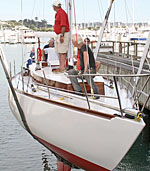 Rainbow II went back into the waters of the Waitemata Harbour today, nearly 45 years since she was lifted aboard a freighter bound from Auckland to Germany where she would challenge for yachting’s One Ton Cup.
Rainbow II went back into the waters of the Waitemata Harbour today, nearly 45 years since she was lifted aboard a freighter bound from Auckland to Germany where she would challenge for yachting’s One Ton Cup.
Rainbow clinched victory off Heligoland on 20 July, 1969 – the same day that Apollo 11 landed on the moon, and in so-doing, the 36ft S&S design, built by Max Carter for young sailmaker Chris Bouzaid, ignited a rocket of her own, launching New Zealand into a blitz on every major offshore racing event in the world until Kiwis ruled ocean racing – on and off the water.
She emerged from the Vos Shed over the weekend and today was re-christened at Pier 21 by John Street’s wife, Lorraine, in front of a gathering that included Bruce Marler, who was commodore of the Royal New Zealand Yacht Squadron and a driving force behind Rainbow’s campaigns for the Cup, current RNZYS commodore Andy Anderson, and Rainbow II crew stalwarts Roy Dickson, Alan Warwick and Peter Shaw.
One more than interested observer was Bouzaid’s son Richard who, as a four-year-old, first tasted “stardom” when the Auckland Star newspaper photographed him sitting in the trophy that his father et al had just won in Germany. Richard is most definitely a chip off the old block, an international sailmaker of repute and a well-regarded offshore racer in his own right.
Rainbow is now on a berth outside the RNZYS where the final bits of her restoration will be completed, including the anti-skidding of the deck and cabin top. She will then start her sailing build up for the Royal New Zealand Yacht Squadron’s five-race One Ton Revisited regatta scheduled to start on 28 February. — Alan Sefton

